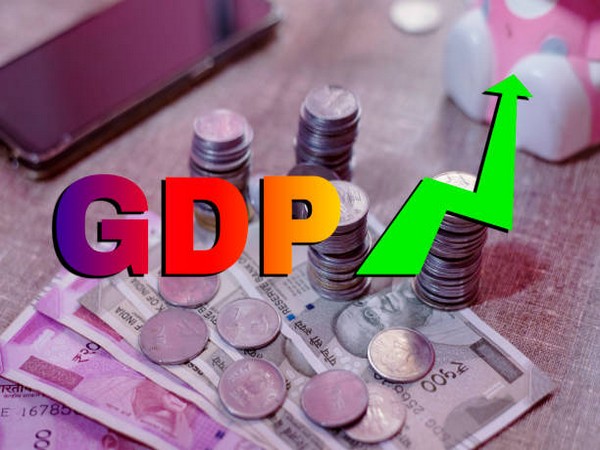
New Delhi: India’s latest data on GDP released on 31st May 2024 have surprised once again as FY 2024 economy grew at 8.2% on the high base of 7% in FY2023 and 9.1% in FY 2022. This remarkable achievement underscores India’s resilience in the face of deepening geopolitical distress and global macroeconomic headwinds, demonstrating the country’s robust economic fundamentals and strategic policymaking.
Several key sectors have significantly contributed to India’s robust economic performance. These sectors include Manufacturing, Construction, Electricity, Gas, Water Supply, and other Utility Services, Mining and Quarrying, Public Administration, Defense, and other Services. The contributions of these diverse sectors highlight the multifaceted nature of India’s economic landscape and the strategic importance of each sector in driving the nation’s overall economic growth.
The manufacturing sector has been a major growth driver, expanding at an impressive rate of 9.9% in FY 2023-24. This growth has been fueled by strategic reforms and prudent policy measures implemented by the government, alongside the concerted efforts of industry stakeholders. The ‘Make in India’ initiative, aimed at transforming India into a global manufacturing hub, has played a pivotal role in this sector’s expansion. Additionally, the focus on enhancing infrastructure, improving ease of doing business, and fostering innovation and technological adoption has created a conducive environment for manufacturing growth.
The construction sector has shown consistent growth at 9.9%, indicating robust economic activity and the creation of new employment opportunities. This sector plays a critical role in absorbing a large portion of the workforce, including skilled, semi-skilled, and unskilled labor. The government’s emphasis on infrastructure development through programs such as ‘Smart Cities Mission’ and ‘Pradhan Mantri Awas Yojana’ has spurred growth in construction activities, driving economic advancement and improving living standards across the country.
The Electricity, Gas, Water Supply, and Other Utility Services sector grew at 7.5% in FY 2023-24, reflecting the essential role these services play in supporting manufacturing activities and overall economic growth. Reliable and efficient utility services are critical for industrial operations, urban development, and the general well-being of the population. The government’s focus on enhancing energy infrastructure, promoting renewable energy sources, and ensuring water security has contributed to the steady growth of this sector.
The tertiary sector, encompassing services such as Public Administration, Defense, and other Services, has also demonstrated steady growth, maintaining a pace of over 7% in 2023-24. This sector’s expansion is indicative of a growing economy that is increasingly relying on services for economic activities and employment generation. The IT and IT-enabled services (ITES) industry, financial services, among others have been significant contributors to the tertiary sector’s performance, underscoring the importance of a diversified economic base.
One of the crucial indicators of India’s economic health and future growth prospects is the Gross Fixed Capital Formation (GFCF), which stood at 33.5% of GDP for FY 2023-24. GFCF measures the net investment in fixed assets such as infrastructure, machinery, and equipment, reflecting the economy’s capacity for expansion and modernization. A high GFCF ratio indicates strong investment activity, which translates into increased production capacity, job creation, and sustained economic growth.
India’s economic trajectory has been particularly encouraging in the aftermath of the COVID-19 pandemic. Despite the challenges posed by the pandemic, geopolitical tensions, and macroeconomic headwinds, India’s GDP growth has consistently surpassed the 7% mark during FY2022, FY2023 and FY2024. This resilience is a testament to the country’s robust economic framework, effective policy interventions, and the inherent dynamism of the economy.
The Indian government has implemented several strategic policy measures to bolster economic growth and resilience. These include fiscal stimulus packages to support businesses and vulnerable populations, monetary policy measures to ensure liquidity and financial stability, and structural reforms aimed at enhancing productivity and competitiveness. Additionally, initiatives such as the Production-Linked Incentive (PLI) scheme, aimed at boosting domestic manufacturing and exports, have further strengthened the growth momentum.
The digital transformation of India’s economy has also played a crucial role in sustaining growth. The widespread adoption of digital technologies, driven by initiatives like Digital India, has revolutionized various sectors, including finance, healthcare, education, and commerce. The growth of digital payments, e-commerce, and digital services has not only increased efficiency and accessibility but has created new avenues for economic activities and innovation.
Looking ahead, India’s economic growth momentum is expected to continue and strengthen in the coming years. The country’s demographic dividend, with a young and increasingly skilled workforce, provides a solid foundation for sustained economic expansion. Moreover, ongoing investments in infrastructure, digital technologies, and human capital development will further enhance productivity and competitiveness.
India is also making significant strides towards environmental sustainability, which is crucial for long-term economic resilience. The government’s commitment to renewable energy, as evidenced by ambitious targets for solar and wind energy capacity, is reducing the economy’s carbon footprint and enhancing energy security. Sustainable practices in agriculture, industry, and urban development are being promoted to ensure that economic growth does not come at the expense of environmental degradation.
Going forward, India’s economic growth trajectory is a beacon of hope in a challenging global landscape. The impressive GDP growth rate of 8.2% in FY 2023-24, driven by the diverse sectors, reflects the country’s resilience and strategic foresight. Despite global headwinds, India has emerged as a growth leader among major advanced, emerging, and developing economies. With continued focus on strategic policy measures, digital transformation, and sustainable development, India is well-positioned to sustain its growth momentum and achieve long-term economic prosperity. India will become a USD 4 trillion economy in the current FY 2024-25, USD 5 trillion by FY 2026–27, a USD 7 trillion economy by 2030. We are all set to position ourselves as the 2nd largest in the Asia-Pacific region and the 3rd largest economy in the World by 2030 and “Viksit Bharat” by 2047.